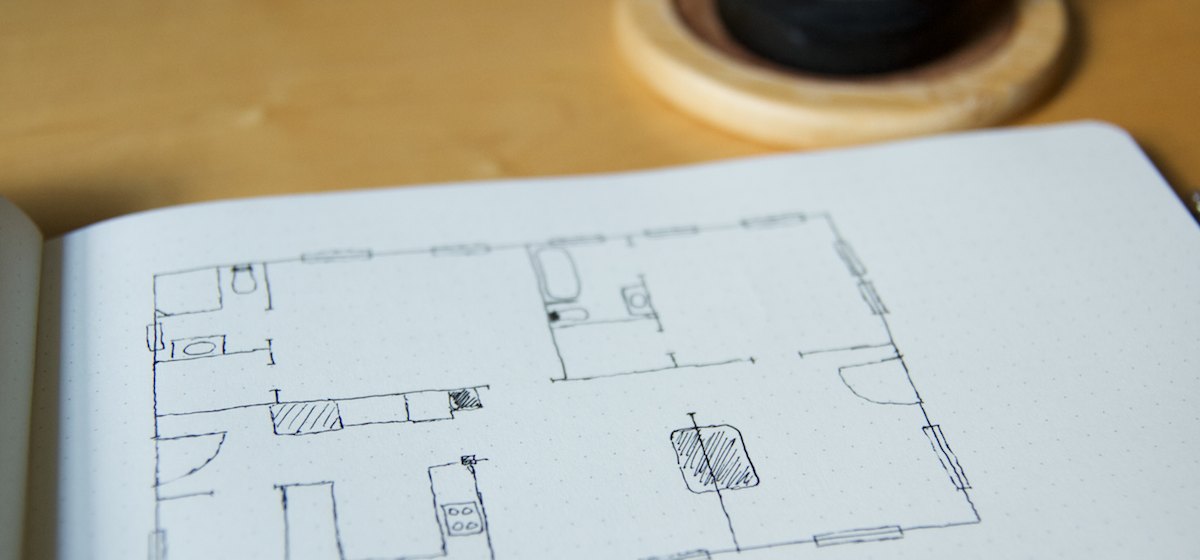Everyone thought the connected home would be Apple or Google’s game. Turns out, that was short-sighted. An Internet-connected thermostat? LOL. Of course it was entirely about who would gain control of your SmartWall. It was the thing that controlled the screens and the lights and alarm clocks and burglar alarm and outdoor atmospheric monitoring system and interior climate control and mirrors and irrigation system and solar collector and water filtration and grocery inventory management database and kitchen appliances and communications center and automobile docking system and exercise equipment and biofeedback monitoring and medicine dispensary and stereo that mattered. But in fairness, who could have foreseen the Microsoft-Samsung deal or its consequences?
Mat Honan wrote a thing a few months ago. I’ve been thinking about it ever since. It’s dark, funny, and feels strangely prophetic. Will the future be that dystopic? Who knows. But his essay captures the way technology so often lets us down.
The piece came to mind this week because we are moving into a house. For the past 18 months, we (my wife, my son and I) have been nomads. We’ve driven across the country. Twice. We’ve driven San Francisco to San Diego, Georgia to Maine, and a lot of area in between. Home has been a very loose concept for us.
But now we’re settling. We’ve moved into a little house in Chattanooga for at least a year. No more things in storage. We’re looking for furniture, putting dishes in cabinets, and yes, connecting things to the internet. The concept of home is now very concrete.

I already love this little house. It’s old, it has the original hardwood floors, huge windows, a little fenced-in backyard, a small but incredibly well-designed kitchen thanks to a renovation. The house itself feels comfortable, especially as we put up the art we’ve collected and as my son’s toys find their ways around the house.
But then I think about the technological layer of the house, and I get really tense. It’s really hard to make all the things work well all – or even most – of the time. I don’t like debugging things. I don’t like constantly solving the same problem again and again. I want to focus my time and energy on other things. But last time I checked that’s far from a possibility with technology.
The UX of a House
If you’re not sure you believe me, let’s start with something simple: your TV. Actually, to help make the point, think about watching TV at a friend’s house. How many remotes can you expect to find? Usually one per device. So let’s see, you have the TV, then possibly a DVR, maybe a BluRay Player, or perhaps a DVD player if your friends aren’t hip. If they are over 40 you might find a VCR too, because those home videos are still laying around, right? And then let’s see, there’s possible an Apple TV or Roku or Amazon box (I can’t remember the name but I bet it relates to burning things), so that thing will have a remote as well. And if your friends are into the good sounds, some or all of these devices may connect to a receiver for surround sound, with yet another remote. Perhaps one of the remotes, like the DVR one, is a “universal” remote so it will control some or all of these devices, helping to “simplify” things.
Except have you ever met a remote control that simplifies things? Ok sure, the streaming box remotes are simple, but they are also tiny and easy to lose and an elegant but nowhere-to-be-found remote is even less usable than a shitty remote in your hand.
Ok so we’ve established you have between 1 and 5 remotes. They all look different, probably. They are probably sitting in a pile. So which one do you pick up to watch what you want to watch?
Well, if your TV is Samsung and your BluRay is Sony, then I guess the Samsung remote goes to the TV and the Sony remote goes to the BluRay. Hope you can read the branding on the devices from the couch!
Oh wait, how handy, your friend has setup the Universal Remote, so you just need one remote. Wait, are you on the TV control mode, or the DVR control mode. How do you even tell? Does it matter. Ok, well I’m going to change the channel so I’ll just hit change channel and SHIT it was on TV control mode and now it just switched to a different TV input. Hmm, but hitting the channel down button still takes me to static. Ok, I’ll just figure out whether I need–
No.
This is just the TV setup. This is how you consume only movies and TV. I’m trying to think about everything that happens in our house. I want living in our house to be pleasant. I want to only rely on technology that is as stable as we can make it. I want technology that is as pleasant and reliable as a gas stovetop (which, unfortunately we don’t have in this house): you just turn it on, and assuming you have gas, you then get heat.
So, here’s what I’m thinking about, to start with.

My wife and I each have smartphones and also we have a Digital SLR. We take an incredible amount of photos of our toddler. I’d like to take more videos of him too. When we take photos on our smartphones they are uploaded to the cloud and synced to my computer. All of them. The good ones, the bad ones, the really blurry ones. When you’re trying to catch an adorable toddler doing an adorable thing, you get a lot of the latter especially. I don’t really need to keep all of those photos in the long run.
When we take photos with the SLR, I have to manually dump them onto my computer. They come in, and I have a system for sorting through them but I’m slow about it, so sometimes it takes awhile.
In my ideal house, the merging of different sources of photos is seamless, the process for sorting through them and organizing is easy and can be done from any number of devices, and the photos that we decide are good can easily and automatically be piped into a central location that might, say, automatically populate the screensaver on my AppleTV, or sync to our Phones so we have an up to date album of really awesome photos. But also, my wife should be able to access the photos on her laptop, and if she edits things, I get the changes.
All of this is maybe theoretically possible with existing tools. But as I mentioned above, I don’t want to have to keep solving this problem. And so when I think about making this whole process work, I have to factor in another thing.
Sunsetting
I hear about startups all the time doing interesting things. I love that there is innovation and excitement and smart people are trying to solve these problems. But I’m also really timid to embrace it, because of my desire to solve a problem and then not wanting to think about the problem again for awhile. My timidity results from the current tech cycle.
Technology is improving so much lately. It blows my mind to think about how a decade ago some (debate club) friends and I were driving from Alabama to Virginia and, while in the car, we set up a wireless network and were losing our minds at how awesome it was to transfer word docs WIRELESSLY while in a MOVING VEHICLE. And it was cool! We’d booted up a wireless router, created a network, and manually connected to each other’s machines via network IP to share documents.
Now, of course, with my smartphone I can email said file, or Dropbox it, or AirDrop it via iPhones, or text it, or Bluetooth it, or I don’t even know. It’s a solved problem.
Photo organization and library syncing however, is not a solved problem. It’s a ridiculously messy problem and very few companies are trying to solve it in a consumer friendly, It Just Works manner. Most of the ones that are doing really interesting things have taken VC funding.
I am not against VC Funding, by-the-way, as one of my favorite jobs ever was at a VC funded company and I am still sad about its closing. But VC funding mostly has the aim of an exit, which is to say how everyone who invested in the company gets their money back. Whereas a bank will give a business loan and get their return via interest, a VC gives a loan with the expectation that it will be repaid at many multiples when the company A) goes public, or B) sells to a larger company.
Ok, but what the hell does that have to do with me organizing my photos? Everything. Remember how I want to solve the problem and then not worry about it again? Well if a startup sells to a larger company, there is very little chance that a year from the sell date their product will be the same. Sometimes the product just shuts down. Sometimes the purchasing company sees a different value in the startup than what their users saw. Sometimes, nothing happens. But the risk is high that things will happen and they will not be positive for me as an end user.
So that risk has to be a factor. And it’s enough of a factor for me to rule out startups. I can’t trust them. I don’t want to buy into their way of doing things only to have to figure out another solution if and when things go down.
Feeling Comfortable
I want to like my home. I want to pick up a remote to watch TV, and not have to think through in advance which device I’m going to use or which service will be providing the media to ensure I grab the right remotes.
I want to capture my son’s childhood, and our family’s adventures, and then easily be able to revisit them on demand. And I haven’t even mentioned music - but I’d love to keep my library current and organized and easy to access on whichever device I’m using.
I’d love to solve these problems. To share the solutions. To trust that the foundation is solid and we can move on to just living our life, enjoying our homes, and figuring out more fun ways to spend our time.
But I don’t know if the solutions exist. Do you have any insights? Hit me up on twitter: @suchwinston



